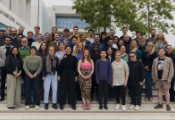Quantum Photonics and AI Group Achieves Breakthrough in Controlling Silicon Color Centers for Scalable Quantum Technologies
October 08, 2025 -- The Quantum Photonics and AI Group at MIT’s Research Laboratory of Electronics (RLE) has developed a groundbreaking method to both control and localize atomic-scale defects in silicon—known as color centers—that act as single-photon sources for quantum communication and quantum computing.
These color centers are among the most promising candidates for quantum memories and secure quantum networks, yet until now, researchers have faced major challenges in precisely tuning their emission wavelengths or pinpointing their positions within silicon devices.
The Quantum Photonics and AI team has solved this problem by applying microscopically controllable strain to silicon structures. This approach allows the team to finely adjust the color of emitted photons while localizing the emission site with nanometer precision. The result is unprecedented control over how and where quantum light is generated within a silicon chip.
This dual capability—control and localization—represents a major step forward for integrating quantum emitters directly into the same silicon platform that powers today’s semiconductor and microelectronic technologies. It brings scalable, chip-based quantum information processing closer to reality and strengthens the bridge between classical and quantum hardware.
As the Quantum Photonics and AI Group continues to pioneer quantum photonic integration, this breakthrough highlights RLE’s leadership in advancing the next generation of quantum technologies—from on-chip quantum light sources to AI-enabled quantum systems that promise faster, more secure information processing.




































